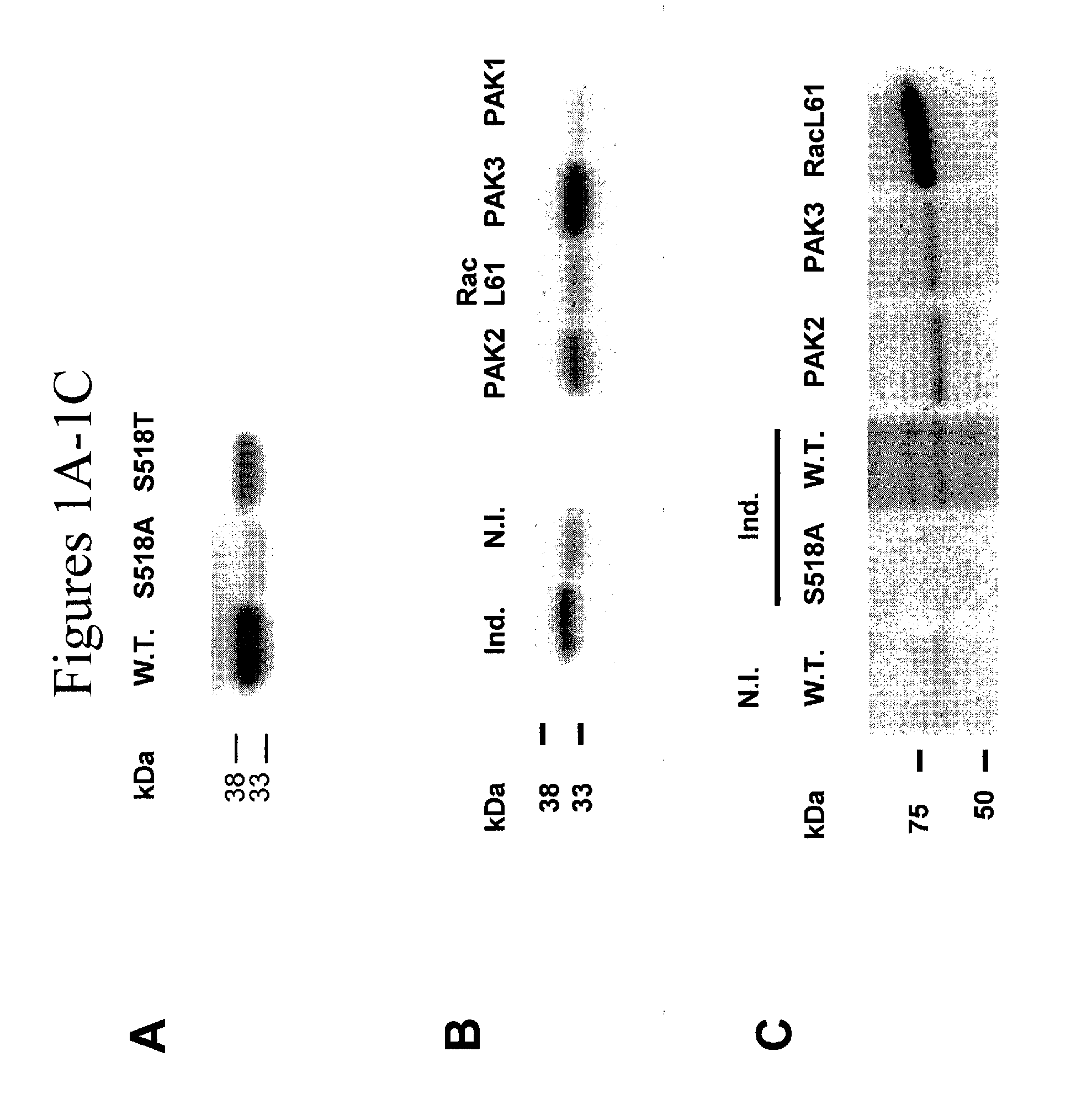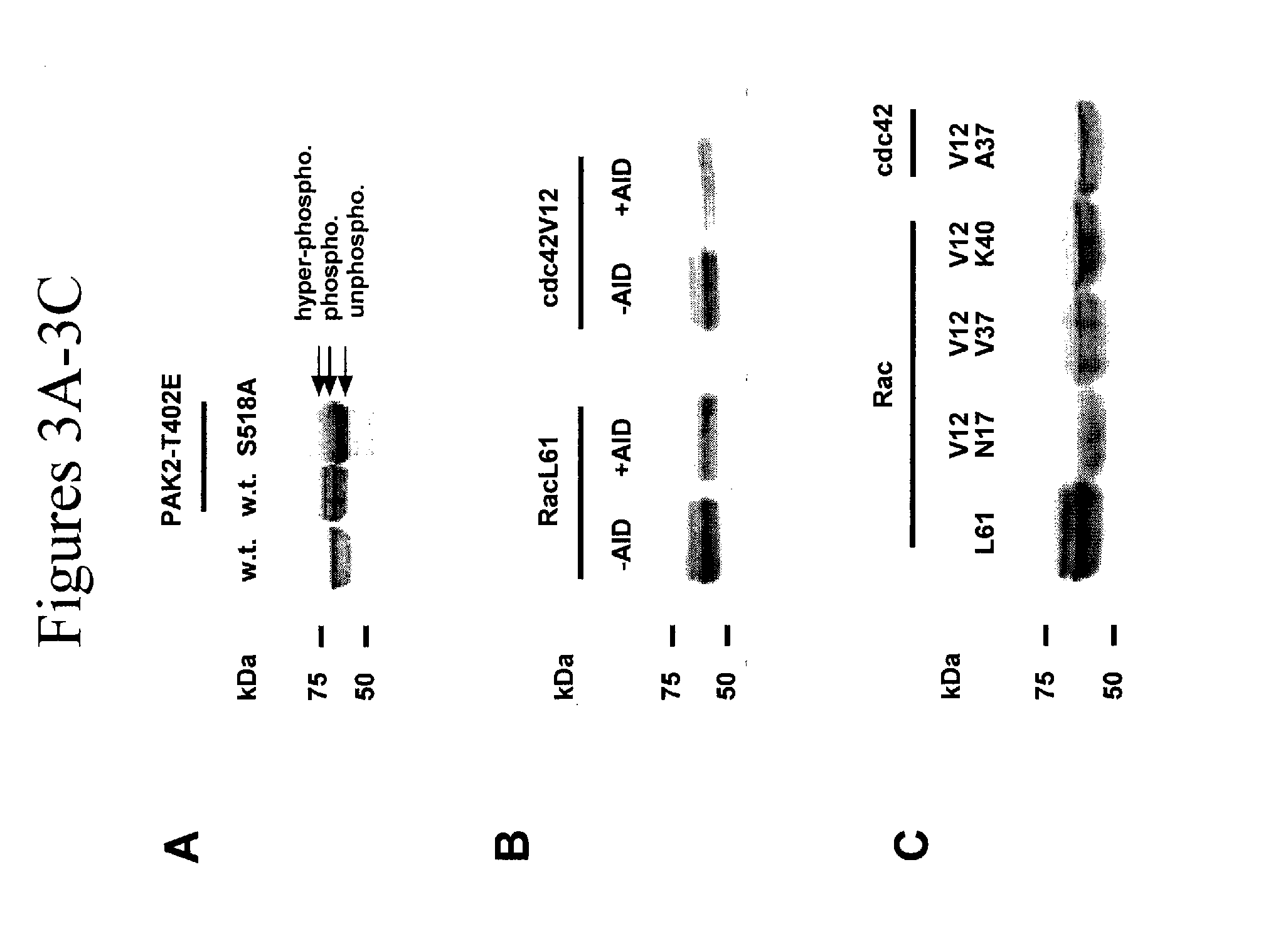Methods for the treatment and prevention of cancer
a cancer and cancer technology, applied in the field of cancer treatment and prevention, can solve the problems of increased risk of infection, hair loss, ulcers in mucous membranes, and increased complexity of the regulation of these proteins, so as to reduce the size of tumors, slow or prevent an increase in tumor size, and increase the disease-free survival time
- Summary
- Abstract
- Description
- Claims
- Application Information
AI Technical Summary
Benefits of technology
Problems solved by technology
Method used
Image
Examples
Embodiment Construction
[0036]We discovered that the phosphorylation of the tumor suppressor merlin at serine 518 is induced by the p21-activated kinase PAK2. This phosphorylation of merlin was demonstrated by biochemical fractionation, use of active and dominant-negative mutants of PAK2, effector activation defective mutants of Rac / cdc42, immunodepletion, and co-immunoprecipitation. Wild-type and mutated forms of merlin and phospho-specific antibodies were used to show that phospho-merlin is enhanced in membrane protrusions in epithelial cells.
[0037]The data regarding merlin phosphorylation indicate that phosphorylation of merlin “inactivates” merlin's function by opening the protein and disrupting merlin intra-and inter-molecular associations. Thus, phosphorylation of merlin by PAK may be equated to inactivation of merlin by disease causing mutations. In light of this information, and the fact that a large number of the above-mentioned tumor types of the central nervous system do not present with mutatio...
PUM
 Login to View More
Login to View More Abstract
Description
Claims
Application Information
 Login to View More
Login to View More - R&D
- Intellectual Property
- Life Sciences
- Materials
- Tech Scout
- Unparalleled Data Quality
- Higher Quality Content
- 60% Fewer Hallucinations
Browse by: Latest US Patents, China's latest patents, Technical Efficacy Thesaurus, Application Domain, Technology Topic, Popular Technical Reports.
© 2025 PatSnap. All rights reserved.Legal|Privacy policy|Modern Slavery Act Transparency Statement|Sitemap|About US| Contact US: help@patsnap.com



